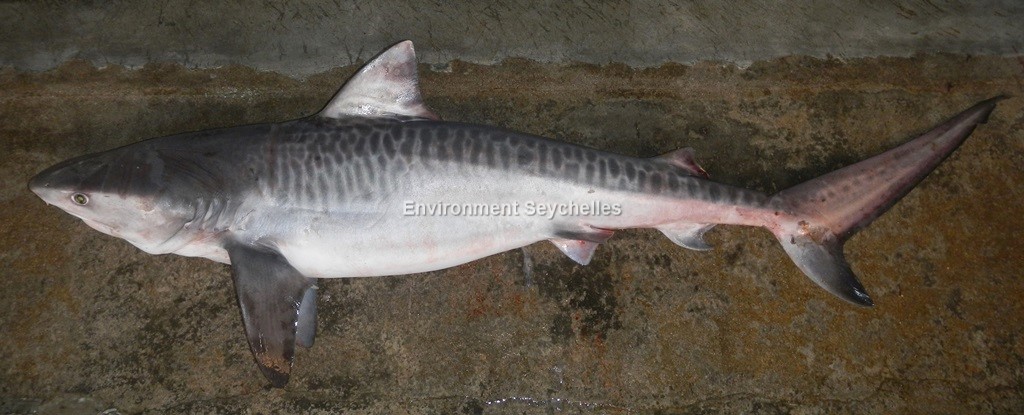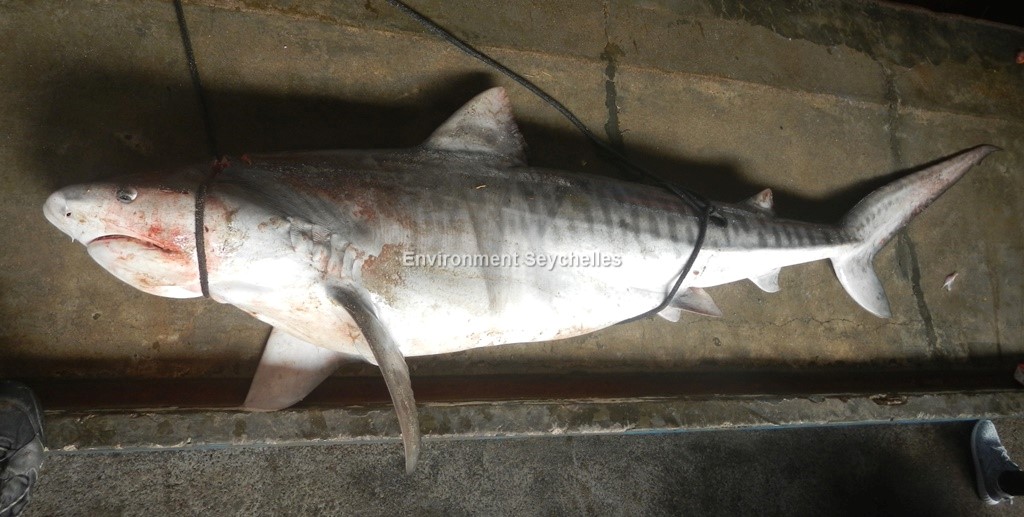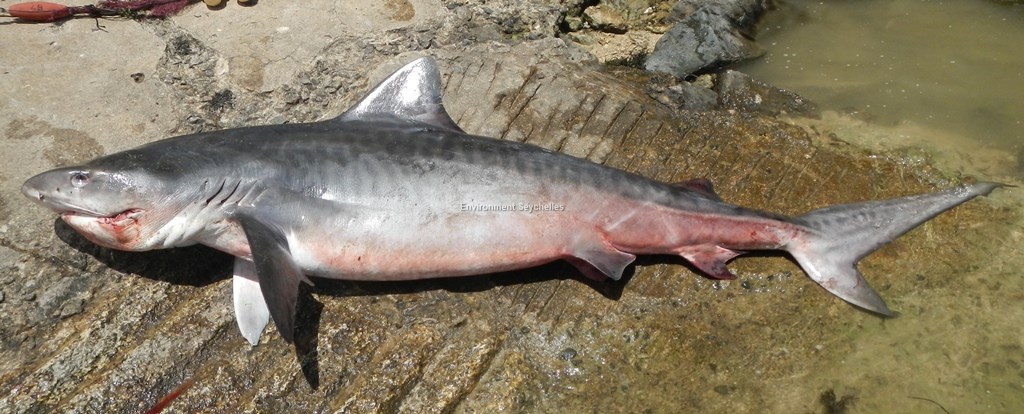Description:
A very large shark with robust forequarters and large broad, bluntly rounded snout. Grey dorsally with dark grey to black vertical stripes and spots on flanks and tail and white below. Stripes and spots fade in adults and may be absent in large individuals.
Fins: D1 large, broad, plain triangular fin. Origin posterior to pectoral insertion. D2 small, plain with origin anterior to origin of anal fin. Prominent interdorsal ridge. Pectorals semi-falcate with sharply rounded apices; grey above white below otherwise plain. Pelvic and anal fins plain; anal fin recurved in shape. Caudal Upper lobe long and thin.
Head: Large, broad, short and bluntly rounded snout, large eyes and large spiracles. Anterior nasal flaps wide and triangular. Very long upper labial furrows, distinctive serrated cockscomb-shaped teeth.
Size:
Born 51-76cm TL. Mature: Male 225-290cm TL, Female 250-350cm TL, Maximum > 550cm TL (one record of 740cm TL). ). In Seychelles 400cm specimens not uncommon, one 5 metre specimen recorded February 2011.
Habitat and Ecology:
Inhabits continental and insular shelves or the waters adjacent to them (depth 1-1136m, but typically 0-100m). Oceanic migrations between favoured locations known. Broad diet of teleosts, sharks, turtles, sea birds, marine mammals, rubbish etc… The only ovoviviparous carcharhinid with 10-82, usually 26-33, pups per litter after gestation period of slightly over 12 months. .
Fishery Status:
This species is not protected. It is however illegal to fish for sharks with nets (Fisheries Act, Reg 16.c). It is caught in hand line, short anchored long line and shark line fisheries.
Notes:
In Seychelles resident inshore populations of large adults were extirpated in the 1950-60s. Large specimens still utilise the plateau however in particular for pupping and are periodically caught in the artisanal shark fishery. Older large specimens lose their stripes and spots and take on a plain brown-grey colouration.
References:
Ebert, D.A. et al (2013). Sharks of the World – A fully illustrated guide. Wild Nature press ISBN 978-0-9573946-0-5
Ferreira, L.C. & Simpfendorfer, C. 2019. Galeocerdo cuvier. The IUCN Red List 2019: e.T39378A2913541. http://dx.doi.org/10.2305/IUCN.UK.2019-1.RLTS.T39378A2913541.en. (27/05/19).
Fisheries Act 2014. Prohibition of net fishing of sharks, Reg. 16c of 1st August 1998. (Carried over from the 1986 Fisheries Act as per Fisheries Act 2014 para 79: Savings and Transitional provisions).
Froese, R. and D. Pauly. Eds. 2018. FishBase. https://www.fishbase.se/summary/galeocerdo-cuvier.html (26/05/19).
Nevill, J.E.G. et al (2015). An identification guide for the sharks of the Seychelles Artisanal Fishery.
Citation:




There are no comments